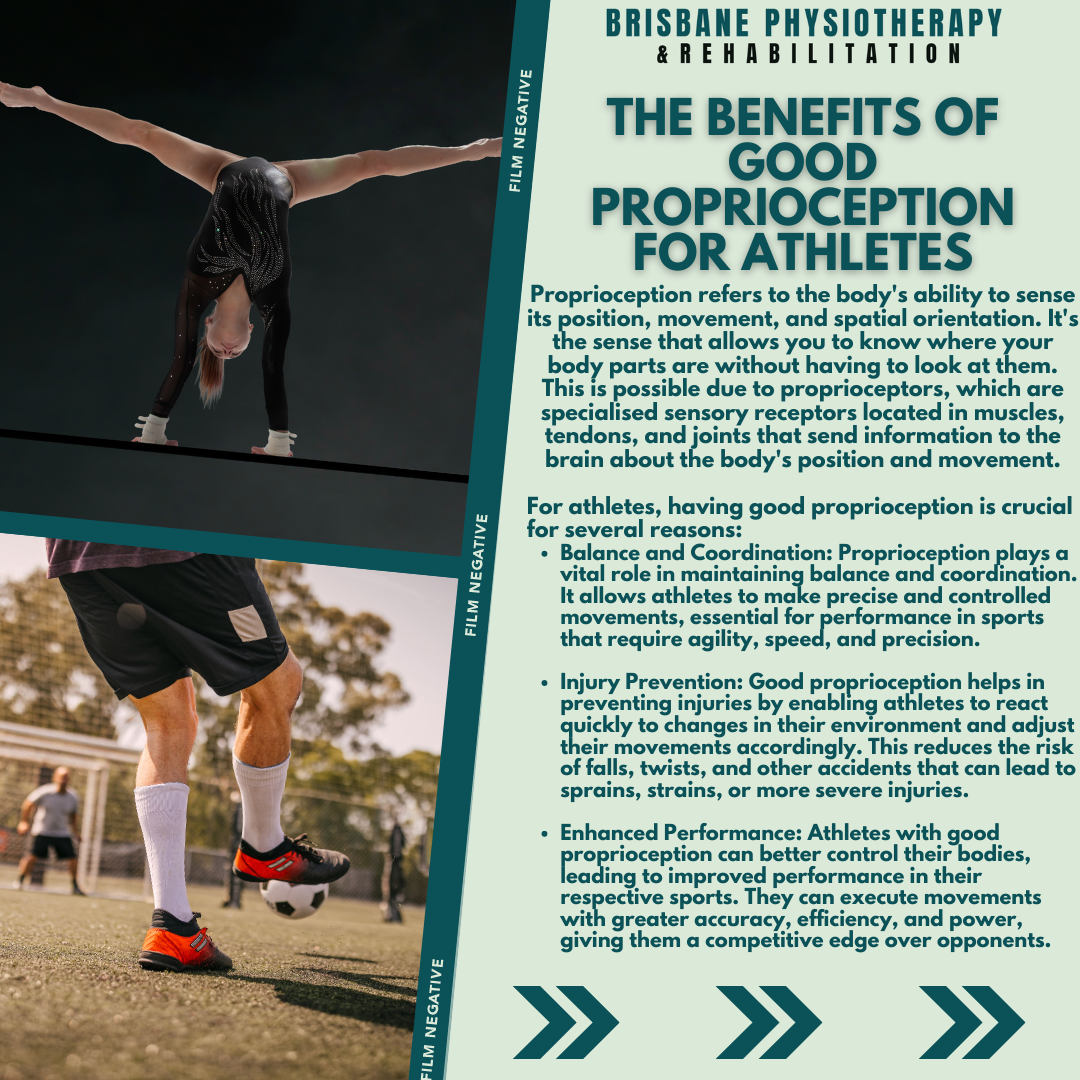The Benefits of Having Good Proprioception as an Athlete
Introduction:
Proprioception refers to the body's ability to sense its position, movement, and spatial orientation. It's the sense that allows you to know where your body parts are without having to look at them. This is possible due to proprioceptors, which are specialised sensory receptors located in muscles, tendons, and joints that send information to the brain about the body's position and movement.
Benefits of Good Proprioception
For athletes, having good proprioception is crucial for several reasons:
Balance and Coordination: Proprioception plays a vital role in maintaining balance and coordination during physical activities. It allows athletes to make precise and controlled movements, which are essential for performance in sports that require agility, speed, and precision.
Injury Prevention: Good proprioception helps in preventing injuries by enabling athletes to react quickly to changes in their environment and adjust their movements accordingly. This reduces the risk of falls, twists, and other accidents that can lead to sprains, strains, or more severe injuries.
Enhanced Performance: Athletes with good proprioception can better control their bodies, leading to improved performance in their respective sports. They can execute movements with greater accuracy, efficiency, and power, giving them a competitive edge over opponents.
Physiotherapy
Physiotherapists often prescribe proprioception exercises to improve or restore proprioceptive abilities in individuals recovering from injuries or surgeries. These exercises typically involve balance training, coordination drills, and functional movements that challenge the body's proprioceptive system. By incorporating proprioception exercises into rehabilitation programs, physiotherapists aim to:
Restore Function: Proprioception exercises help individuals regain normal movement patterns and functional abilities following an injury or surgical procedure. By enhancing proprioceptive feedback, these exercises facilitate the restoration of proper biomechanics and motor control.
Reduce Recurrence of Injuries: Strengthening proprioception can lower the risk of reinjury by enhancing joint stability, muscle coordination, and neuromuscular control. This is particularly important for athletes who may be prone to recurrent injuries due to the demands of their sport.
Improve Balance and Stability: Proprioception exercises challenge balance and stability, which are essential for maintaining proper posture and preventing falls. By enhancing proprioceptive awareness, individuals can better control their body's position and movements, reducing the likelihood of accidents or mishaps.
Conditions
Conditions or injuries where having good proprioception can be particularly beneficial include:
Ankle Sprains: Proprioception exercises help restore stability and prevent recurrent ankle sprains by improving neuromuscular control and ankle joint proprioception.
ACL Tears: Proprioceptive training is often part of rehabilitation programs for ACL tears to enhance knee joint stability and reduce the risk of reinjury.
Rotator Cuff Injuries: Proprioception exercises can aid in restoring shoulder joint function and improving dynamic stability in individuals recovering from rotator cuff injuries.
Chronic Low Back Pain: Proprioceptive exercises targeting core stability and posture can alleviate symptoms and improve functional capacity in individuals with chronic low back pain.
Conclusion
Overall, good proprioception is essential for athletes to optimize performance, prevent injuries, and facilitate recovery from musculoskeletal problems.
